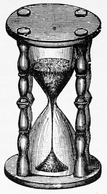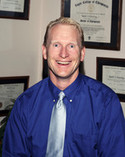Although you might start seeing a change in the way your back feels almost immediately after starting your SPINAL DECOMPRESSION PROTOCOL, healing will take longer ---- actually much longer. This is critical for you to know and understand.
HERE ARE SOME GUIDELINES FROM CIGNA INSURANCE COMPANY. OTHER INSURANCE COMPANY'S GUIDELINES WILL BE VIRTUALLY IDENTICAL.
MY COMMENTARY IS IN RED
- Rest if you have severe pain. Otherwise, stay active. Staying in bed for more than 1 or 2 days can weaken your muscles and make the problem worse. Walking and other light activity may help [This is actually pretty good advice. If you have been paying attention, you already know that DISC DEGENERATION is caused by loss of normal joint motion over time. Ultimately, the thing that is going to help you heal is a restoration of joint motion.].
- Try using a heating pad on a low or medium setting for 15 to 20 minutes every 2 or 3 hours. Try a warm shower in place of one session with the heating pad. You can also buy single-use heat wraps that last up to 8 hours. You can also try an ice pack for 10 to 15 minutes every 2 to 3 hours [Quick question: What does an ankle do when you injure it? That's right; it swells. What does a Spinal Disc do when you injure it? It does the same thing --- the only difference is that the swelling is deep where you cannot see it visibly. If you want to understand this issue, read our ICE -vs- HEAT article. I am all for heat as long as it's done the right way. Do it the wrong way and it will make you worse.]
- Do the exercises that your doctor or physical therapist suggests. These will help keep your back muscles strong and prevent another injury. [Hey, I can't argue with this. If you can do these exercises, by all means do them! Just be aware that often times people who are suffering with HERNIATED DISCS cannot do the exercises without causing immense amounts of pain. Also be aware that giving everyone the same set of generic exercises is not the answer. There are no one-size-fits-all exercises. And do not under any circumstances to crunches of situps (DR. STUART MCGILL'S ARTICLE)]
- Ask your doctor about medicine to treat your symptoms. Medicine won't cure a herniated disc, but it may help with pain and swelling. [There is no dishonor in taking pain meds for severe pain. However, not only are NARCOTICS dangerous, they are addictive as well. And the commonly prescribed anti-inflammatory drugs? The less powerful ones do not provide any much benefit at all, and the more powerful ones (CORTICOSTEROID INJECTIONS) are so degenerative and dangerous that good doctors will explain to you why they can only give you a couple of them --- even if they actually help with your symptoms.]
The truth is that even though surgeons are suggesting and doing Spinal Surgeries at an ever increasing rate (EIGHT FOLD INCREASE IN SPINAL FUSIONS SINCE 2003), more and more people are putting off these surgeries because they have been made aware of just HOW POOR THE OUTCOMES ARE. And isn't it funny how Insurance Companies are willing to make the leap from "walking", "physical therapy", and "medications" (things that all of you reading this post have already tried), to surgery, without first suggesting something that is not only shown by large amounts of SCIENTIFIC RESEARCH and ANECDOTAL EVIDENCE to be effective for helping heal disc problems? SPINAL DECOMPRESSION THERAPY costs less than 5% of what the average Spinal Surgery is going to cost. I always thought insurance companies were interested in saving money!
I did not understand their mindset when I started practice two decades ago, and I still do not understand it today! If insurance companies were interested in what's best for their clients (as well as saving a boat-load of money in the process), they would be "making" their clients who are diagnosed with "THE BIG FOUR" (HERNIATED DISCS, DEGENERATIVE DISCS, SPINAL STENOSIS, or FACET SYNDROME) try a round of Spinal Decompression Therapy before they could as much as speak with a surgeon.]
THE TRUTH ABOUT HEALING TIMES FOR SPINAL DISCS
I want you to notice something that is said (or rather, not said) in the section above. Cigna states that, "About half of people with a herniated disc get better within 1 month, and most are better within 6 months." This is a true statement. But it does not tell the whole truth. What does the word "better" really mean? Does it mean that the disc is healed? Or does it just mean that their pain is less severe now than it was on the day they herniated the disc? You know; the week they could not get out of bed, get dressed, or even get to the toilet. Sure they're better. They can at least get out of bed on their own now. But are they really "better "? Not always.
The disc is made up of an outer Annulus that is comprised of layer upon layer of ligaments. the ligaments of the Annulus hold the jelly center (Nucleus) in place. When these ligaments start to tear, the Nuclear Jelly is allowed to "bulge" or HERNIATE toward the outside. The more Annular tearing that occurs, the further the Nucleus pushes its way out of the disc. The Nucleus frequently ends up compressing the Spinal Nerves, the Spinal Cord, or both. Not fun!
Now that we've ascertained that the part of the disc that actually tears or ruptures is the ligaments, let's discuss what it takes to get injured or torn ligaments to heal.
Most of us have heard the old adage, "You would have been better off to break your bone than to tear the ligaments that hold the bones together". Why is this? Why have doctors been making this or similar statements for decades? It has to do with blood supply. Ligaments have virtually no blood supply. Blood is what brings OXYGEN, nutrients, and water into the disc ---- and carries metabolic waste products out (so that the cells do not become toxic / acidic). If you have followed this blog, you are already aware that the disc is said to be "avascular". In simple English, this means that it has no blood supply.
When I was researching this article, I came across a question on a message board about a certain professional athlete. Someone was wanting to know why so-and-so (a professional football player) had not yet come back from his injury --- an injury to the ligaments of his ankle. Bear in mind that the ankle is not nearly as complex as the Spinal Disc. Also bear in mind that a professional athlete is going to have the best surgeons, the best and most up-to-date rehab, and he will be treated 6-8 hours a day, every day, for months on end! On top of that, he was already a well-trained athlete in superb physical condition. Listen to the response by a bioengineer (expert in biomechanics) commenting on the case.
Cell energy is due to ATP (adenosine triphosphate). That is cell energy "currency", if you will. The more ATP your cell can make, the more energy your cell has, and the faster it can reproduce to fill in the voided tissue. ATP is produced in the cell through processes such as glycolysis, the citric acid cycle and the electron transport chain. Glycolysis and the citric acid cycle can only produce a few ATP (2 each), while the electron transport chain can produce many more (32 to 36). Without getting into the meat and potatoes of what each cycle does, let me just say that the key to making the most energy possible is oxygen.
If you can introduce oxygen to a cell, your cell can undergo what is called "aerobic respiration". Basically, this means that your cell can do all 3 processes (glycolysis, citric acid cycle and electron transport chain). Without oxygen, your cells can only perform 2 of those processes (glycolysis and the citric acid cycle). This is less than ideal. Without oxygen, you're producing about 1/8 the energy that you would have produced with oxygen in the cell.
Some of the latest scientific research on the subject says that even though a person with a disc injury might be out of pain in 6-8 weeks, the disc itself will take 300 to 500 days to heal. And because ligaments (remember, the part of the disc that actually has to heal is made up of ligaments) can only heal to about 60 to 70% of their previous strength and elasticity. This is why disc injuries can be such a huge deal ----- and why they DEGENERATE if not taken care of properly.
Since the disc has no blood supply, the "cellular exchange" (swapping oxygen, nutrients, and water, for waste products) must take place via the disc's fluid. How does this occur. The disc acts as its own pump. As long as the disc is moving / pumping, the disc is being nourished and oxygenated. However, abnormal joint motion caused by injury or degeneration is what itself causes degeneration. This leads to loss of motion, which leads to more degeneration.
OXYGEN THERAPY & COLD LASER
Two Things that Make our Disc Protocol Different
We add Oxygen to our SPINAL DECOMPRESSION PROTOCOL as well. Once you understand how critical oxygen is to the healing process, it's a no-brainer. Because the cerebellum regulates the Spinal Postural Muscles, we also add CEREBELLAR REHAB to our protocol as well. We also address the problem disc's "Abnormal Motion" issues as well. This is done via different kinds of CHIROPRACTIC ADJUSTMENTS and a home exercise program. The bottom line is that the core of our SPINAL DECOMPRESSION PROGRAM is geared towards getting more motion, more OXYGEN, more water, and more nutrition into the Disc; while pumping metabolic toxins out of the Disc.
Bear in mind that the 300 to 500 days it take for a disc to completely heal is a long time. This is why there is more to our program than simply treating you for 6 or 8 weeks and then telling you to hit the bricks because you feel better. You will be given specific exercises that not only strengthen the spinal muscles, but actually help put motion back into the disc so that it can "pump" like it is supposed to. We will talk to you about numerous other things that you can (no, "must") do to continue the disc's healing process. I will also show you which supplements are the best as far as providing specific nutrients geared toward healing discs / ligaments. I will also strongly suggest a home-regiment of INVERSION THERAPY. It's the total package!
Don't continue to suffer. And before you decide on a RISKY SPINAL SURGERY, you seriously need to consider Non-Surgical Spinal Decompression Therapy! It's both EFFECTIVE and safe, as proven by dozens of SCIENTIFIC STUDIES. Simply pick up the phone and call (417) 934-6337 to set up a free no-obligation consultation with Dr. Schierling. He will sit down and review your history and tests, and determine whether or not you are A GOOD CANDIDATE for Spinal Decompression Therapy.




 RSS Feed
RSS Feed
